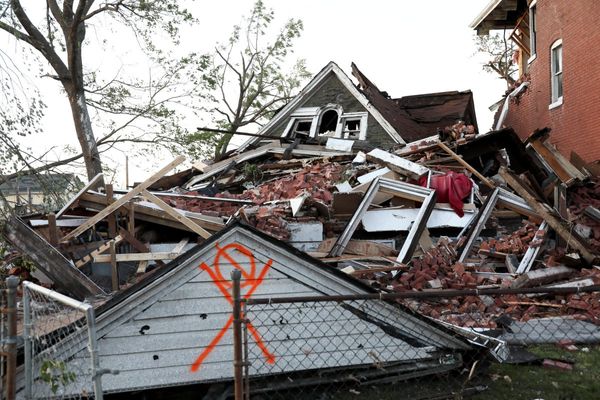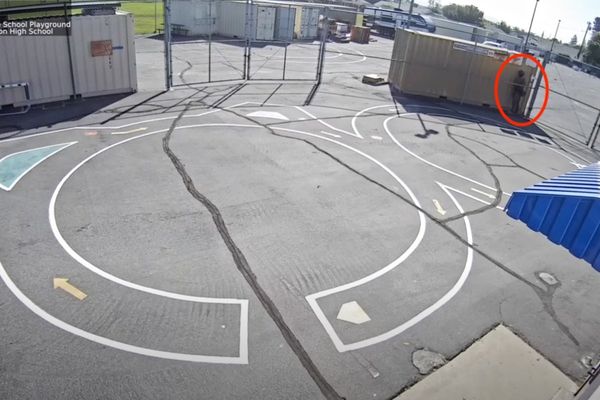
Ralph Erskine, 1983
This is dangerous territory, choosing the 10 best council estates. Best architecturally or socially? The two, notoriously, are often not linked and as it’s beyond the scope of this list to undertake a social survey of all the estates in the country, it will lean towards the architectural. Byker Wall, however, strove to be both. Ralph Erskine set up his office in the area and invited future residents to drop in and say what they wanted. It also has purpose-designed details such as letterboxes and garden gates and pioneering energy-saving techniques. It was hit by the effects of industrial decline in the 1980s but is now recovering Photograph: Islandstock/Alamy

Neylan and Ungless, 1967
The work of a young, competition-winning architect, 29-year-old Michael Neylan, who teamed up with Bill Ungless to realise an intimate, small-scale complex of alleys and courtyards that followed the contours of a gentle hill and culminated in a castle-like crown. It was an exemplar of architects’ love affair with Italian hill towns, although locals transposed the inspiration to the other side of the Mediterranean and called it the Casbah. In 2008 it was threatened with demolition for failing to meet the government’s “decent homes” standards, but with 92% of residents saying that they liked their homes, the authorities relented Photograph: The Twentieth Century Society

Southwark borough council’s architects’ department, 1972
Balconies! Who needs balconies? Not the 1960s housing minister Richard Crossman, who lamented that architects were wasting money adding such fripperies to council housing. Dawson Heights is the riposte of Kate Macintosh, then a 26-year-old architect with Southwark borough council. A romantic brick mountain range in what is already a hilly landscape, its design smuggles balconies into the design by making them double up as escape routes. So they couldn’t be taken out by cost-cutters without breaking safety regulations. The blocks also enclose a landscape with now-mature trees that is much more pleasant than the equivalent open spaces on other estates Photograph: Dan Skinner /Alamy

Tayler and Green, 1963
Guess what... they have council housing in the countryside too. Some of the best are the 687 units built for Loddon rural district council from the 1940s to the 1970s by the lifelong partnership of Herbert Tayler and David Green who, despite making their name with an early modernist house in Highgate, turned to pitched roofs, painted brickwork and layouts that created sheltered communal spaces. They retained modernist rigour in their planning, however, often reinventing house types, and finding innovative solutions to such questions as the storage of gumboots and garden tools. Davy Place has bottle bottoms set into its walls, which refer to the fact that its site was formerly a town dump
Photograph: Jim Stephenson

Jack Lynn and Ivor Smith, 1961
The largest listed building in Europe, as the result of a decision by English Heritage that caused many to think that this eminent organisation had finally lost its marbles over this huge piece of concrete. But the way it drapes itself over its hilly landscape, and rises like a people’s castle over Sheffield’s railway station is magnificent. It’s one of many estates to have first succeeded in its social aims, then failed for reasons more to do with housing policy than architecture. Now it is famous/infamous for its makeover by hipster developers Urban Splash, which was shortlisted for the Stirling prize. It’s design-led regeneration or it’s social cleansing. Take your pick Photograph: Steve Forrest/Guzelian

London county council architects’ department, 1890-1900
London is often seen as a city of rampaging free enterprise, which overlooks the fact it has also pioneered such things as council housing, of which the Boundary estate is one of the earliest examples. It replaced the Old Nichol Rookery, a slum feared and abominated for its squalor, with wholesome apartments in fresh-looking brick and terracotta. At its centre is Arnold Circus, a memorable tree-topped mound, like some pagan burial site, actually formed from the rubble of the old slum. A note of caution: the wretched residents of the latter didn’t actually benefit from the new estate, which was designed for the better-off working classes – they were shoved off to equal misery elsewhere Photograph: RIBA

Darbourne and Darke, 1961-80
If modernist town planning – would-be rational towers and slabs set in landscaped open spaces – took hold in Britain after the second world war, it wasn’t long before a reaction set in, including among architects themselves. Lillington Gardens estate, whose two architects won the commission in a competition when they were 26 and 32, is an attempt to reintroduce human scale, variety, natural materials and urban spaces. Their design takes some red-brick DNA from the nearby Victorian church of St James the Less and multiplies it into advancing and receding balconies, which would eventually stretch most of the considerable length of Vauxhall Bridge Road Photograph: Andrew Holt /Alamy

Aberdeen City architects dept, 1966
I’m indebted to the Twentieth Century Society for telling me about this one, a pair of proud, rugged cuboids, 19 and nine storeys high, whose architects evidently felt that the best response to Aberdeen’s tough climate would be buildings of equal toughness. Lest there was a danger of being thought softies, they inserted panels of unusually large lumps of aggregate in the sides. With its picturesquely grim name, and a sculptural car park at its base, it is the sort of place that seems doomed to “concrete hellhole” headlines, but I am assured that “it is a popular place to live”. I await a blast of correspondence to tell me otherwise Photograph: Aberdeen City Architects’ Department

Ernö Goldfinger, 1972
It’s as if there is a reservoir of concrete under west London, under high pressure, that pushes itself up to form monuments. One is the horizontal car viaduct of the Westway, another the tall, elegant stele of the Trellick Tower which, if you’re driving on the former, seemingly rotates. Its architect, Ernö Goldfinger, inspiration for the Bond villain of the same name, articulated its flanks into syncopations of balconies and structure. It is also famous for its Pygmalion history: a vertical slum known as the Tower of Terror that became loved and sought-after and, in the way of all desirable property, gentrified Photograph: Ben Ramos/Alamy

Chamberlin, Powell and Bon, 1962
The practice of Chamberlin, Powell and Bon started and finished their career in the same bomb-damaged area on the northern edge of the City of London. They concluded with the Barbican Centre, having also designed the Barbican estate. They set up, in their early 30s, with the competition-winning design for the Golden Lane estate. It is a sociable, protective place, with well-considered details and a beautiful interplay between the interiors of homes and outside spaces. Which meant that, in the wake of right-to-buy, it was one of the first council estates to be discovered by design-aware purchasers Photograph: Ray Roberts/Alamy







